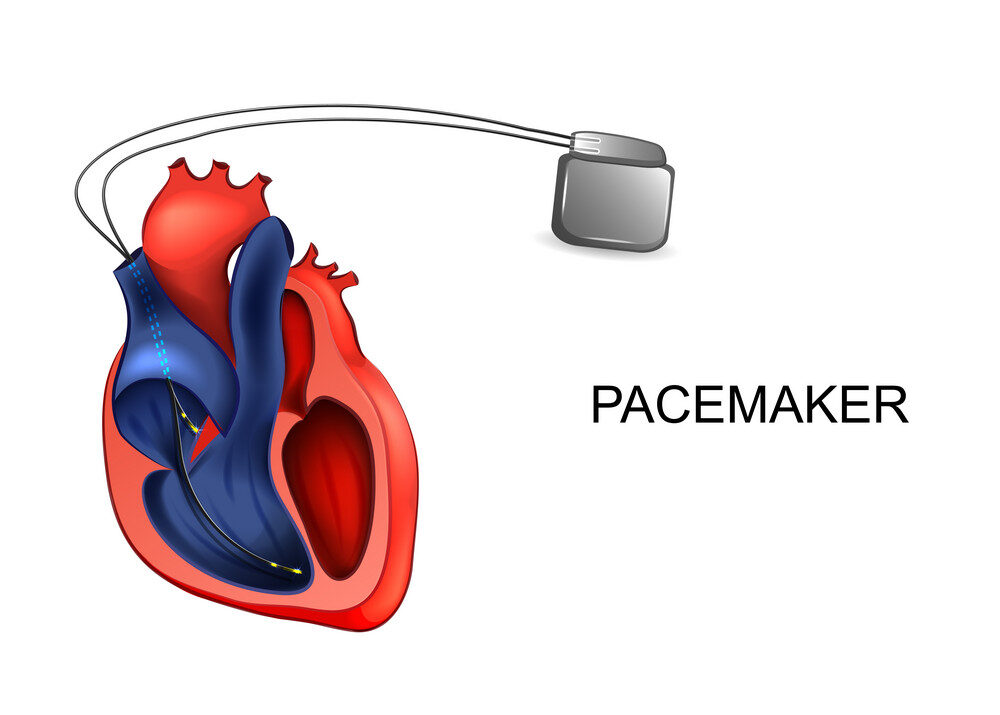A pacemaker may be inserted in order to stimulate faster heart rate when the heart is beating slowly.
A pacemaker insertion is the implantation of a small electronic device that is usually placed in the chest (just below the collarbone) to help regulate slow electrical problems with the heart. A pacemaker may be recommended to ensure that the heartbeat does not slow to a dangerously low rate. A pacemaker is composed of three parts: a pulse generator, one or more leads, and an electrode on each lead.
A pacemaker may be inserted in order to stimulate a faster heart rate when the heart is beating too slowly, and causing problems that cannot otherwise be corrected.
Problems with the heart rhythm may cause difficulties because the heart is unable to pump an adequate amount of blood to the body. If the heart rate is too slow, the blood is pumped too slowly. If the heart rate is too fast or too irregular, the heart chambers are unable to fill up with enough blood to pump out with each beat. When the body does not receive enough blood, symptoms such as fatigue, dizziness, fainting, and/or chest pain may occur.
Your doctor will tell you how often you will need to have your pacemaker checked. In most cases, it will be every 6 months to a year. The exam will take about 15 to 30 minutes.
The batteries in your pacemaker should last 6 to 15 years. Regular check-ups can detect if the battery is wearing down or if there are any problems with the leads (wires). Your provider will change both the generator and battery when the battery gets low.
Precautions:
- Always carry an ID card that states you have a pacemaker.
- Let screeners know you have a pacemaker before going through airport security detectors. In general airport detectors are safe for pacemakers, but the small amount of metal in the pacemaker and leads may set off the alarm.
- You should also avoid large magnetic fields such as power generation sites and industrial sites such as automobile junkyards that use large magnets.
- Avoid high-voltage or radar machinery, such as radio or television transmitters, electric arc welders, high-tension wires, radar installations, or smelting furnaces.
- If you are having a surgical procedure performed, inform your surgeon that you have a pacemaker well before the operation.
- When involved in a physical, recreational, or sporting activity, protect yourself from trauma to the pacemaker.
When to call the doctor:
- Your wound looks infected (redness, increased drainage, swelling, pain).
- You are having the symptoms you had before the pacemaker was implanted.
- You feel dizzy or short of breath.
- You have chest pain
- Report any of the following symptoms to your doctor or to Dr. Sanjay Kumar – Best Pacemaker Surgery Doctor in Faridabad
- Dizziness or light-headedness
- Slow pulse
- Blackouts
Check OPD schedule and book appointment online with best Cardiologist from Fortis Hospital – top hospitals in Faridabad. Call +91-9818391954. Ensuring best possible care using latest technology for a wide spectrum of heart diseases. Top Diagnostic Facility.

